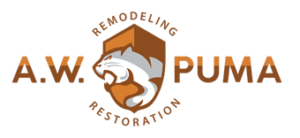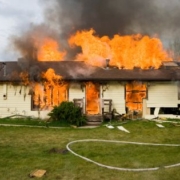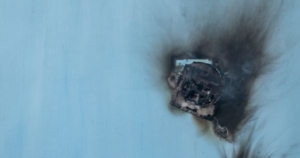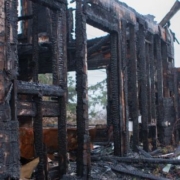What Is the Average Fire Damage Restoration Cost in 2024?
In a bustling city like Boston, fire damage can wreak havoc on homes and businesses alike. Whether caused by electrical faults, cooking accidents, or other unforeseen events, the aftermath of a fire can be devastating. But what exactly is the average fire damage restoration cost in 2024? Let’s delve into the numbers and factors that determine the expenses associated with restoring a property after fire damage. If you are looking for a reliable company providing services of fire damage restoration Boston, we have tips on how you can find one and a recommendation worth checking out.
Fire Damage Toll
Fires can leave behind a trail of destruction, affecting not only the structure of the building but also personal belongings and cherished possessions. The emotional toll is immeasurable, while the financial burden can be substantial. Understanding the costs involved in fire damage restoration is crucial for homeowners and business owners alike.
Fire Damage Restoration and Cleanup Costs
If you’ve been wondering How much does it cost to rebuild a house after a fire? we’re here to provide estimates. On average, homeowners can expect to pay anywhere from $3,000 to $30,000 for restoration and cleanup services. However, in severe cases, costs can exceed $50,000 or more. Factors such as the type of damage, the presence of smoke or water, and the need for specialized cleaning techniques can all impact the final bill.
Average Fire Damage Restoration Costs Per Damage Type
The damages extend beyond just the visible charred areas. Each type of damage presents its challenges and requires specific attention during the restoration process. Let’s explore the breakdown of average fire damage restoration costs per damage type to gain insight into the financial aspects of recovery.
- Smoke Damage: Smoke damage is one of the most pervasive issues following a fire, infiltrating every corner of the affected space and clinging to surfaces and belongings. Restoration costs for smoke damage typically range from $1,000 to $4,000, depending on the severity and extent of the damage.
- Water Damage: Water damage is often a secondary concern after a fire, caused by firefighting efforts or burst pipes. The cost of restoring water damage can vary widely, ranging from $2,000 to $10,000, depending on the amount of water present and the extent of the damage to the property.
- Soot Removal: Soot is a byproduct of incomplete burning and can be challenging to remove from surfaces and materials. The cost of soot removal typically falls between $500 to $2,000, depending on the extent of the staining and the type of surfaces affected.
- Deodorizing Furniture: Smoke odor can linger long after a fire, spreading through furniture and upholstery. Deodorizing furniture can range from $200 to $1,000, depending on the size and quantity of items requiring treatment.
- Ozone Treatment: Ozone treatment is an effective method for neutralizing odors and sanitizing surfaces affected by fire damage. The cost of ozone treatment typically ranges from $500 to $3,000, depending on the size of the space and the severity of the odor.
- Duct Cleaning: HVAC systems can spread smoke, soot, and other contaminants throughout a property, requiring thorough duct cleaning during the restoration process. The cost of duct cleaning typically ranges from $500 to $2,000, depending on the size and complexity of the HVAC system.
Fire Restoration Cost Per Square Foot
The cost per square foot for fire damage restoration typically ranges from $4 to $15. However, this can vary depending on the location, the severity of the damage, and the extent of the restoration required.
Other Factors Affecting Fire Damage Restoration Costs
Several factors can influence the overall cost of fire damage restoration, including the type of fire and the effectiveness of the fire suppression system. Upgrading fire suppression systems can help minimize damage in the event of a fire and potentially lower restoration costs in the long run.
Type of Fire
- Class A Fire: Class A fires involve common flammable materials such as wood, paper, cloth, and plastics. These fires typically leave behind ash and char. The restoration costs for Class A fires generally range from $3,000 to $15,000, depending on the extent of the damage.
- Class B Fire: Class B fires involve flammable liquids or gases such as gasoline, oil, grease, and propane. These fires can spread rapidly and produce intense heat, often resulting in extensive damage to property and structures. The restoration costs for Class B fires typically range from $5,000 to $20,000, depending on the size and severity of the fire.
- Class C Fire: Class C fires involve energized electrical equipment or wiring, such as appliances, outlets, and circuit breakers. These fires pose unique hazards due to the presence of electricity. The restoration costs for Class C fires can vary widely depending on the extent of the damage and the complexity of the electrical systems involved, ranging from $5,000 to $25,000 or more.
- Class K Fire: Class K fires involve cooking oils and fats commonly found in commercial kitchens and restaurants. These fires can be particularly challenging to extinguish due to the high temperatures involved and the potential for re-ignition. The restoration costs for Class K fires typically range from $10,000 to $30,000, depending on the size of the kitchen and the extent of the damage.
Upgrading Fire Suppression
Upgrading fire suppression systems can play a crucial role in minimizing fire damage and reducing restoration costs. Installing sprinkler systems, fire alarms, and fire extinguishers can help contain fires and prevent them from spreading, minimizing the damage to the property. The cost of upgrading fire suppression systems can vary depending on the size and complexity of the system, ranging from $1,000 to $10,000 or more. For trustworthy recommendations, you can also contact the Boston Fire Department.
How to Find Reliable Fire Damage Services
When searching for fire damage restoration services, it’s essential to choose a reputable and experienced contractor. Look for companies with positive reviews and testimonials from satisfied customers. It is also important to check if they own licenses or certifications for fire damage.
Contact A.W. Puma Restoration & Remodeling for Fire Damage Restoration
If you live in Boston and are uncertain of which company to contact for help, A.W. Puma Restoration & Remodeling is there to assist every step of the way. Our IICRC-certified team is equipped to handle your fire damage restorations from start to finish. Give us a call at (508) 300-9747 or fill out an online form on our website.
